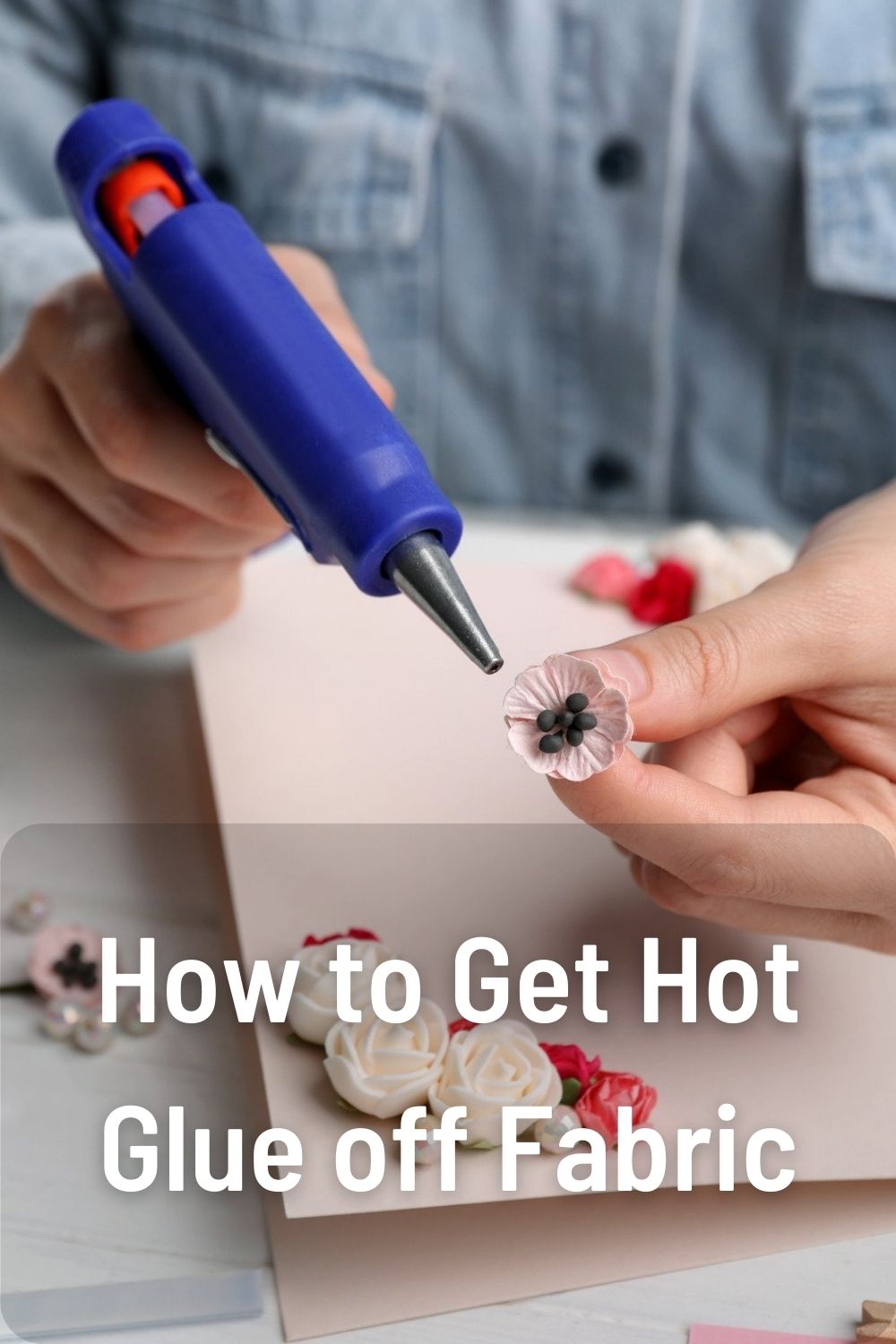
Hot glue guns are incredibly handy for quick craft and home repair projects. But things don’t always go as planned. Accidental drips or spills of hot glue on fabric can leave behind sticky, gummy residue that’s difficult to remove.
The good news is that removing hot glue from fabric is possible with the right techniques. This complete guide covers everything you need to know to get pesky hot glue stains out of clothes, upholstery, and other fabric items.
Table of Contents
What You Need to Remove Dried Hot Glue
Before tackling hot glue stains, gather the following supplies:
Hot iron
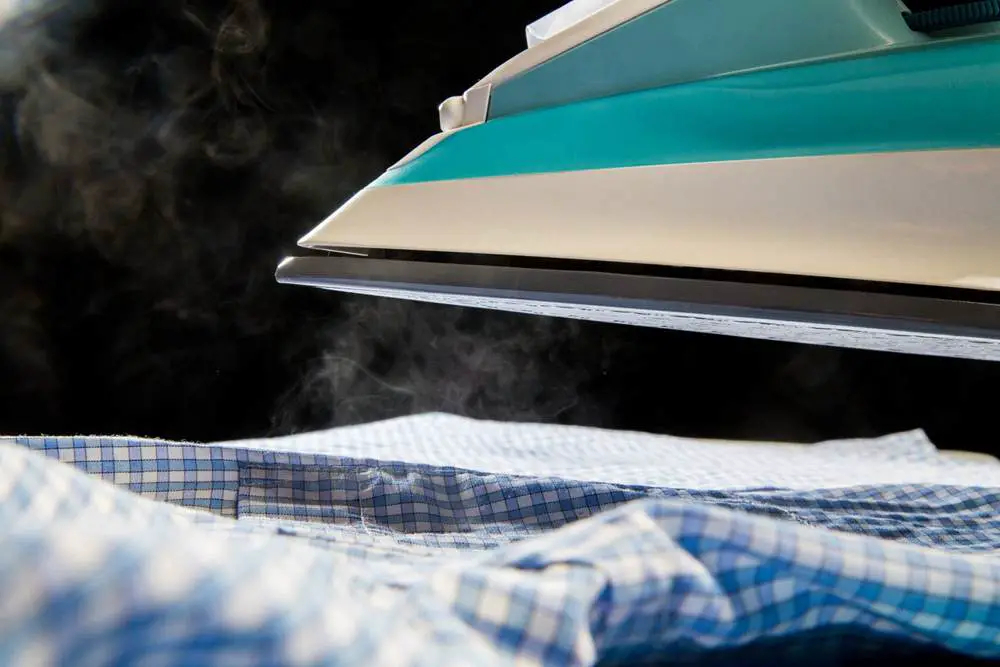
A hot iron is useful for softening and lifting dried hot glue off fabric. Set the iron to a polyester setting if working with synthetic fabrics. For cotton and other natural materials, use the cotton/linen setting.
Old towel
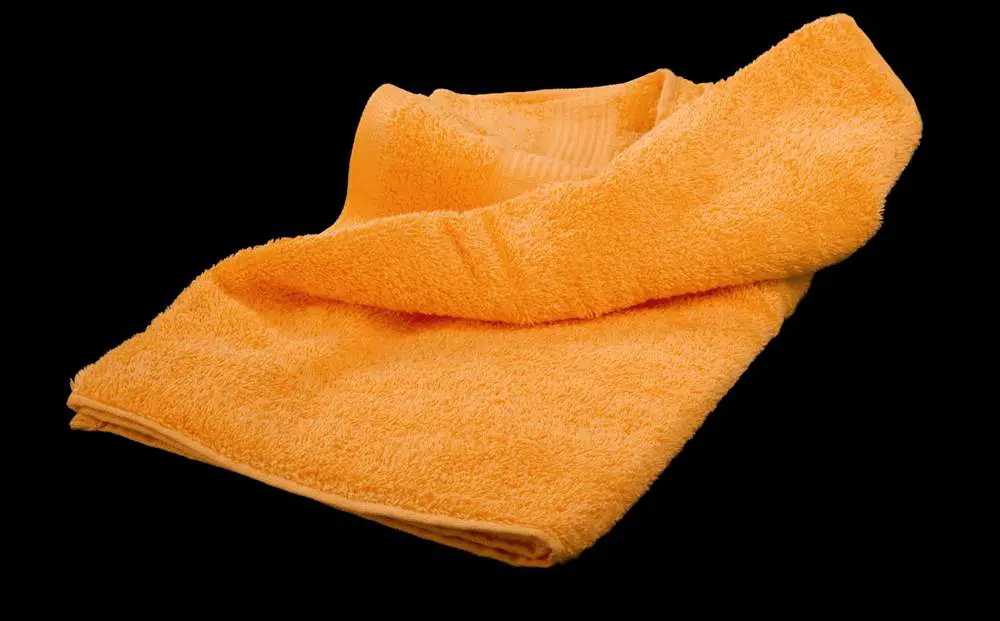
Place an old towel or cloth between the fabric and iron to prevent damaging the item. The towel helps absorb melted glue.
Scraping tool
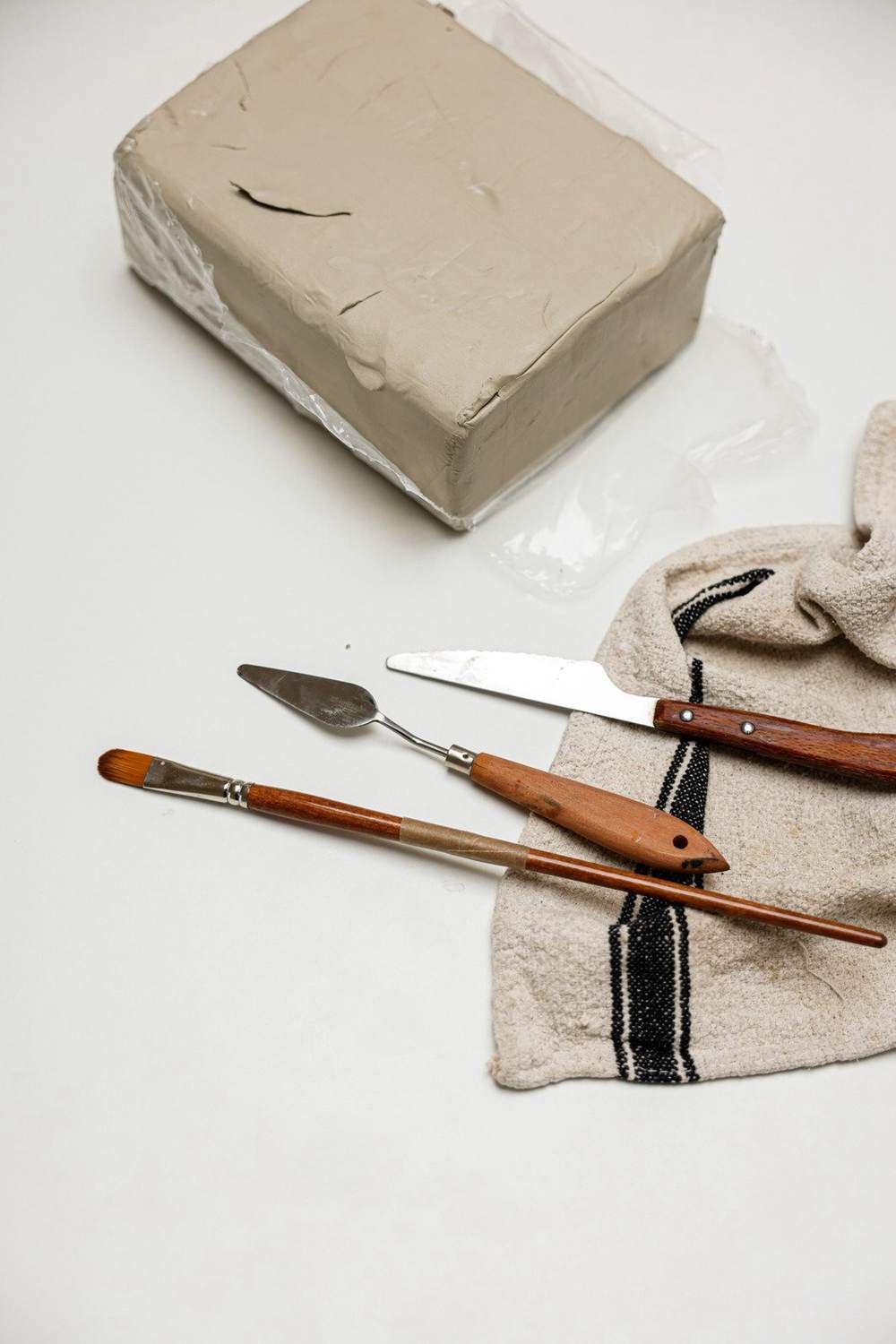
A dull butter knife, credit card, or plastic scraper can help lift softened glue residue after ironing.
Rubbing alcohol
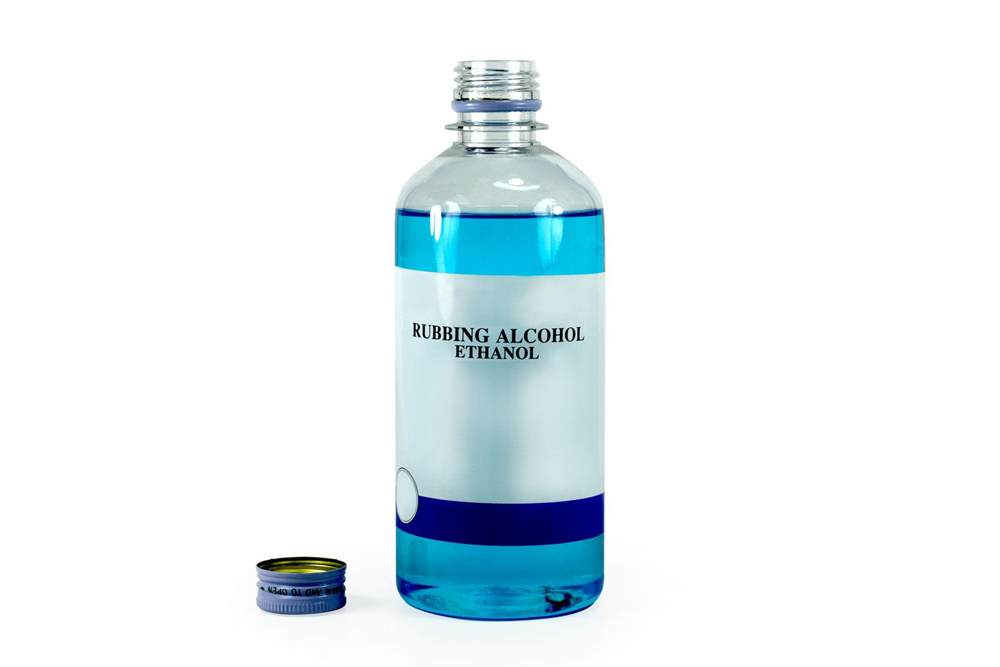
Rubbing alcohol helps break down any remaining sticky residue after scraping. It also helps remove glue stains.
Rags or paper towels
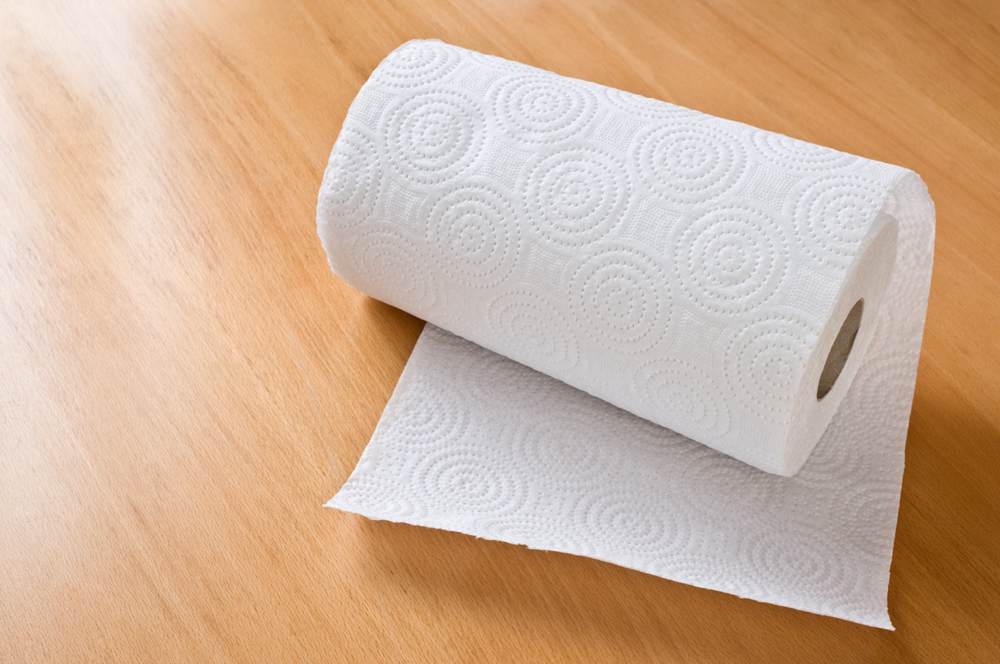
Have some rags or paper towels on hand to press down on glue stains while ironing and to wipe up excess melted glue and alcohol.
Laundry detergent or vinegar
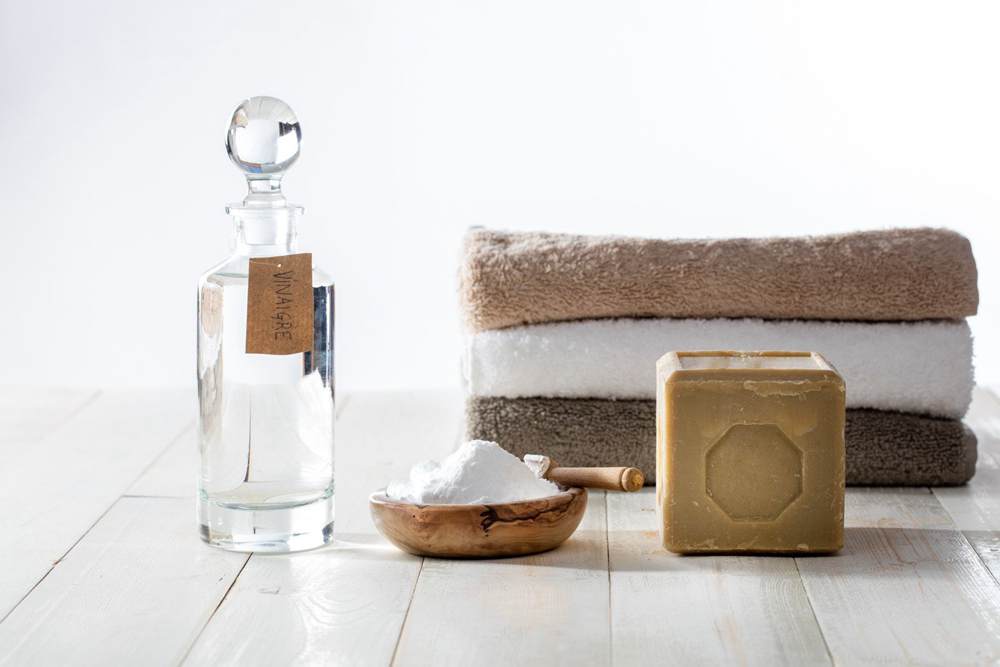
For final cleanup of any leftover glue spots, mix a small amount of laundry detergent or white vinegar with warm water. Then sponge or blot stain areas.
Step-By-Step Guide to Removing Dried Hot Glue
Follow these steps to safely remove stubborn dried hot glue from fabric:
Step 1: Act quickly for fresh spills
If possible, address hot glue spills right away while still warm and pliable. Gently peel off as much of the warm glue as you can using a dull flat tool or your fingers. Then dab some rubbing alcohol on any remaining sticky residue.
Step 2: Iron over a towel on medium heat
For dried glue, place an old cloth or towel over the glue stain. Then press a hot iron set to medium heat on top of the towel. The goal is to transfer heat through the towel to soften the glue.
Move the iron slowly over the stained area for 30 seconds at a time. The towel helps protect the fabric from direct heat damage.
Step 3: Peel off loosened glue
Once you’ve softened the glue with the iron, use a dull knife, credit card, or plastic scraper to gently lift the glue off the fabric. You may need to reheat with the iron again to fully release stuck-on glue.
Step 4: Use rubbing alcohol for leftover residue
If any sticky residue remains after peeling off the ironed glue, apply a small amount of rubbing alcohol directly on the stain. Let it soak in for a minute or two. Then lightly rub the area with your tool or fingertips to scrub away remaining glue.
Step 5: Rinse with water and detergent
Next, rinse the fabric under warm running water to wash away alcohol and debris from scraping. Mix a tiny bit of laundry detergent with warm water and gently sponge it over any lingering stains. Then rinse again.
Step 6: Air dry and launder as normal
After removing the dried glue, lay the fabric flat and allow it to fully air dry. Once dry, you can launder the item as usual if it’s machine washable. Inspect closely after washing to ensure all glue residue is gone.
Step 7: Use vinegar for leftover glue spots
For any faint glue stains that may remain after washing, make a solution of 1 part white vinegar to 1 part warm water. Dip a clean cloth in the solution and dab or blot the stain until it’s gone. Let air dry again before wearing or using the fabric.
Tips for Avoiding Hot Glue Stains on Fabric
Removing dried glue can take some effort. Here are tips to help avoid hot glue mishaps in the first place:
- Work in an area with newspaper or scrap material under the fabric to catch drips.
- Keep the nozzle tip clean and free of old glue buildup.
- Position nozzles precisely before squeezing glue.
- Apply glue carefully in small amounts at controlled speeds.
- Allow glue to fully cool and harden before moving the fabric.
- Store projects flat until the glue has fully set.
Will Hair Dryer Heat Remove Hot Glue?
Using a hair dryer on a hot setting is another heat method some people try for removing dried hot glue from fabric. However, it’s generally less effective than using an iron.
There are a few reasons why hair dryers aren’t the best tool for hot glue removal:
- Hair dryers blow air, which cools and hardens glue quickly rather than softening it.
- They don’t apply concentrated, consistent heat like an iron does.
- The blowing air can spread melted glue further into fabric fibers.
If you need to use a hairdryer, hold it 6-10 inches away from the fabric and keep it moving continuously over the stain to prevent overheating. Have a dull tool ready to scrape softened glue. But for best results, always opt for an iron over a hair dryer for hot glue removal.
How to Get Hardened Hot Glue Off Clothes
Hot glue drips can be especially problematic on clothing like shirts and pants. Here are some tips for removing stubborn glue from garments:
- Check clothing tags and identify fabrics before applying heat or chemicals. Many synthetic fabrics are heat-sensitive.
- For delicate fabrics, skip the iron and use the dull scraping tool to gently lift dried glue off material without heat.
- Place scrap cloth or cardboard inside clothes while working on glue stains to avoid damaging the other side.
- Rub a small amount of laundry detergent directly on the stain to help loosen glue before washing.
- Wash garments in cool water and air dry to prevent heat damage to fabrics. Recheck for stains and spot clean again if needed.
With some persistence and care, you can successfully remove dried hot glue from clothes without ruining the material. Just take it slowly.
How to Get Hardened Hot Glue off Upholstery
Upholstered furniture and fabric-covered headboards often fall victim to accidental hot glue spills. Use these techniques to remove stubborn dried glue from upholstery:
- First vacuum up any hardened glue pieces you can remove by hand.
- Identify fabric types before applying heat. Many synthetic upholstery fabrics are heat-sensitive.
- Place a thin towel over the stain and press with a warm iron to soften glue. Use lower heat for delicate upholstery.
- Lightly scrub softened glue stains with a dull tool or soft-bristle upholstery brush.
- Use rubbing alcohol sparingly on upholstery. Test on an inconspicuous area first.
- For leftover spots, apply a paste of baking soda and water. Let sit briefly, then wipe clean with a damp cloth.
- Rinse the area with clean water and allow upholstery to fully air dry.
With some care, you can remove challenging glue stains from upholstery without causing damage. Just take it slowly and avoid oversaturating delicate fabrics.
How to Get Glue Out of Carpet and Rugs
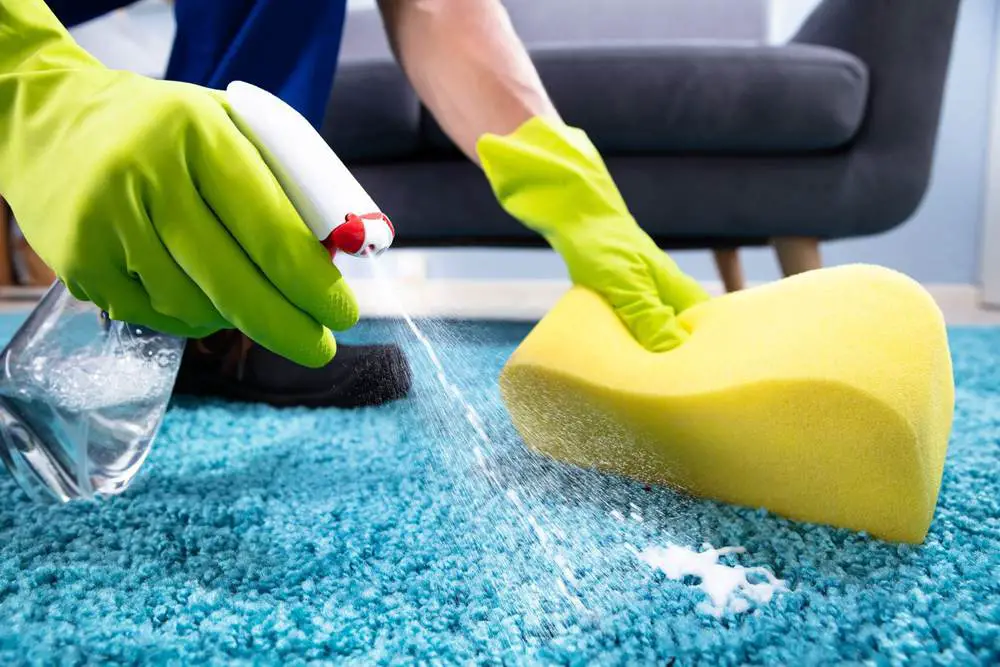
Carpet and area rugs are magnets for hot glue spills. Use these steps to tackle dried glue stuck in fibers:
- First pick up any hardened glue chunks you can remove with fingers. Use a dull knife or spoon if needed.
- Apply rubbing alcohol directly onto the affected fibers. Let soak briefly.
- Use an old towel to blot and rub the area to scrub residue. Avoid excessive moisture.
- Sprinkle corn starch or talcum powder over the stain when dry and let sit overnight to absorb residue.
- Vacuum up the powder. Reapply and vacuum again if needed.
- For padding stains, make a solution of dish soap and warm water. Use a sponge to gently blot it on the underside.
With some persistence, you can get pesky dried hot glue out of carpet and rug fibers without damaging them. Just take your time and use care not to oversaturate the area.
Frequently Asked Questions
1. Can I use acetone to remove hot glue?
Acetone is effective at dissolving super glue, but it’s not recommended for hot glue. Acetone can damage or stain many fabric types. It’s best to stick to ironing, scraping, and rubbing alcohol for hot glue removal from fabrics. Reserve acetone for getting super glue off hard, non-porous surfaces.
2. What about using vinegar and baking soda?
A paste of white vinegar and baking soda can help lift some hot glue residue through chemical reactions and gentle abrasion. However, it may not fully remove stubborn stains set deep in fabrics. Mild detergents and specialty stain removers designed for fabrics are usually more effective options.
3. How do I soften old, hardened hot glue?
Extremely old, hardened glue can be difficult to remove with just ironing. Try softening it up first by applying a light coating of rubbing alcohol or Goo Gone gel. Let it soak in for a few minutes to penetrate the glue before ironing. The chemicals help break down the aged glue bonds.
4. Is there a homemade hot glue stain remover recipe?
One effective homemade stain remover for dried hot glue is:
- 1/2 cup rubbing alcohol
- 1 tablespoon liquid laundry detergent
- 2 cups warm water
Mix the ingredients together in a spray bottle. Then lightly mist over glue stains and let soak before blotting and scrubbing clean.
5. What kind of iron temperature should I use?
Start with a medium heat setting equivalent to about 300°F when ironing over hot glue stains. Adjust temperature as needed. High heat over 400°F can potentially damage fabrics. Low heat under 250°F likely won’t soften the glue effectively.
Conclusion
Removing accidentally spilled hot glue from fabrics takes a little work but is definitely doable. With the proper techniques and supplies – like a hot iron, rubbing alcohol, and some elbow grease – you can successfully eliminate dried glue from clothes, upholstery, carpets, and other items. Just be sure to work slowly and carefully, testing on inconspicuous areas first. With some persistence, your fabrics will be saved and glue-free.